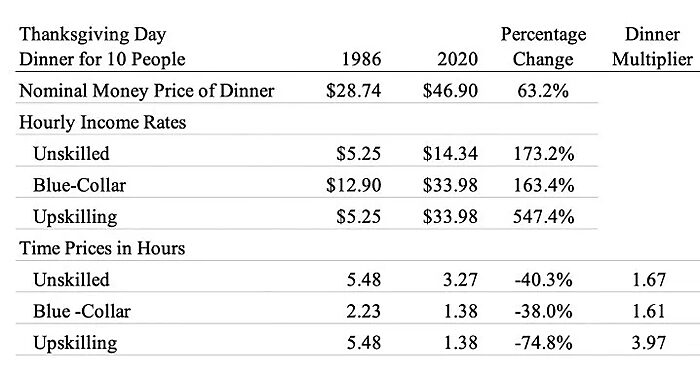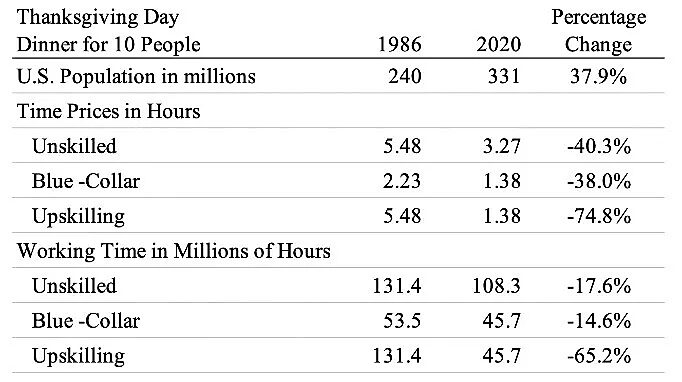Since 1986, the American Farm Bureau Federation has conducted an annual price survey of food items found in a typical Thanksgiving Day dinner. The items on this shopping list are designed to serve a group of ten people, with leftovers. The list includes a 16-pound turkey, a 30-oz pumpkin pie mix, one gallon of milk, a one-pound vegetable tray, twelve bread rolls, two pie shells, one pound of green peas, twelve ounces of fresh cranberries, one-half pint of whipping cream, 14 ounces of cubed stuffing, three pounds of sweet potatoes, and several miscellaneous ingredients. What has happened to the price of a Thanksgiving Day dinner over time?
In nominal terms, the cost rose from $28.74 in 1986 to $46.90 in 2020 (a 63.2 percent increase). Over the same period, inflation amounted to 135 percent, which would have meant that the dinner should have cost around $67.69. In fact, it cost only $46.90. So, adjusted for inflation, a Thanksgiving Day dinner became $20.79 (i.e., 30.7 percent cheaper). But what if we analyze the cost of a Thanksgiving Day dinner using “time prices”? To calculate the time price of a Thanksgiving Day dinner, we divide the nominal price of the meal by the nominal wage rate. That will give us the number of hours of work required to earn enough money to feed the ten guests. We can then analyze the change in time prices over time.



